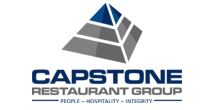Information
-
Conducted By
-
Store Number
-
Quater/Period & Week
-
Conducted on
-
Document No.
Sanitation/Cleanliness
-
Ice Machines: clean, sanitized, free of rust and mold, and not used for food storage.
-
Grease filters, range exhaust hoods, and exhaust hood filters cleaned.
-
Slicers, dicers, and food processors cleaned and sanitized between use.
-
KTI: Broiler, Dough Pro and Garlands cleaned and properly maintained.
-
Allergen kits and contents are clean.
-
Filter machine cleaned daily/free from accumulated grease.
-
Grease receptacles emptied regularly.
-
Cleaned and sanitized dishware and utensils are stored off the floor and in clean dry location.
-
Utensils cleaned, sanitized, and stored to protect them from contamination.
-
Wash temperature 120 degrees; rinse temperature of at least 75 degrees maintained for tableware and utensils.
-
Detergent concentration maintained at the necessary level for effective cleaning; chlorine between 50-100 ppm?
-
Restrooms are clean and sanitary. Baby changing stations are clean and sanitized; clasps are in working order.
Food Safety
-
Food is kept covered when in transit to prep / service areas.
-
Food is properly protected from contamination
-
Frozen foods are properly thawed under refrigeration or under cold running water and cooked from frozen state.
-
Food preparation area is clean and free from debris.
-
Storage of food is completely separate from storage of cleaning powders, insecticides, or other poisonous substances.
-
Sauces on charbroiler are properly labeled and stored. Reheating procedures are followed.
-
Hot-holding equipment maintains food at or above 150 degrees.
-
Cold foods are held at 40 degrees or lower.
-
Food-holding cabinets are equipped with secondary thermometers.
-
All fruits and vegetables are thoroughly washed with Victory Wash.
Equipment
-
Ladders are in all stockrooms with shelf/rack storage.
-
Nitrous and helium tanks are chained for safety.
-
All electrical equipment is properly grounded - no exposed wires. Lamps have proper housing.
-
There is at least one Type K (Kitchen) fire extinguisher located in the kitchen. Extinguishers are properly tagged and inspected within last 30 days.
-
Ansul system fire extinguisher are inspected and located near the cooking area.
-
Counters, steam tables, carts & wheels, drawers and serving equipment are free from sharp corners and in good repair.
-
There are 3 pairs of goggles - Clean, bagged, ready for use.
-
Microwave ovens in good repair, especially doors & seal.
-
Cut gloves readily available in the bar and HOH.
-
Knives kept in designated areas when not in use.
-
Inspections of glassware, china, flatware, and plastic equipment are regularly scheduled, in addition to being inspected on an as you go basis.
-
Glass and china stored in proper storage facilities and not in temporary storage area such as counter or table surfaces.
-
Emergency exit devices on walk-in refrigerators/freezers operate properly. Blower fan has screen or mesh guard.
-
Light fixtures operational, guarded, and two feet (minimum) from stored items; rubber coated bulbs are being used.
-
Video cameras operational & capture the designated area.
-
First aid kit is readily accessible, well stocked and organized.
Floors
-
Traffic patterns are unobstructed by pans, dish tubs, racks, and other obstacles; portable signs are used to indicate any hazards.
-
Floor coverings are clean and well maintained, free from holes, tears, loose threads, loose or chipped tiles, debris and other tripping hazards. (FOH & HOH)
-
Floors are frequently monitored for excessive water, wet floor signs used; non-skid mats or flooring provided in wet areas.
-
Edges of mats lie flat and are not curled or turned up.
Outside
-
Steam, gas and water pipes are clearly marked for identification.
-
No debris in water drain on roof.
-
Outside neons free from birdnests, debris or any other fire hazard.
-
18 inches of stone between mulch and building is present.
TM Observations
-
TMs are trained in the safe use of cleaning compounds/drying agents to prevent dermatological problems.
-
TMs take adequate precautions to prevent burns from hot liquids, hot serving containers, steam, and heat lamps.
-
TMs do not leave handles of pans protruding into the aisle space.
-
Cut gloves, guards on cutting, dicing, and slicing machines are used.
-
TMs properly use safeguards on broilers, fryers, etc.
-
TMs use pot holders or gloves for handling hot items.
-
TMs use proper lifting techniques.
-
Slip resistant shoes and burn protection are being worn.
-
TMs wash their hands frequently and between tasks.
-
Vinyl gloves are used when handling "ready to eat food", at and during food prep.
-
TMs use trays and carts to carry armful of items.
TM Knowledge
-
Have you been trained in fire safety; evacuations; extinguishers and hood suppression systems?
-
Team Member Name
-
Where are the fire extinguishers located?
-
Team Member Name
-
How do you extinguish a cooking vessel fire?
-
Team Member Name
-
Are safety question asked at RSGs? What are some of the questions you've been asked?
-
Team Member Name
-
What is the temperature danger zone? Why do we have it?
-
Team Member Name
-
What are the 4 symptoms of food borne illness?
-
Team Member Name
-
What could you receive if you make a suggestion to the Safety Committee?
-
Team Member Name
-
What's the most important thing you can do to prevent food related illnesses?
-
Team Member Name
-
What is the purpose of the Right to Know sheets? Where are they located?
-
Team Member Name
-
Explain the proper procedures for opening a can.
-
Team Member Name
-
How do you open plastic bags?
-
Team Member Name
-
What is the proper procedure for scooping ice?
-
Team Member Name
-
What precautions should you take when walking to your car, especially at night?
-
Team Member Name
-
What is the legendary safety award?
-
Team Member Name
Postings
-
Servsafe Certifications current and posted.
-
Current Safety meeting minutes and best practices posted & visible.
-
WC panel physicians posted.
-
Emergency Action Plan posted.
Finish Audit
-
Audit is Complete!











